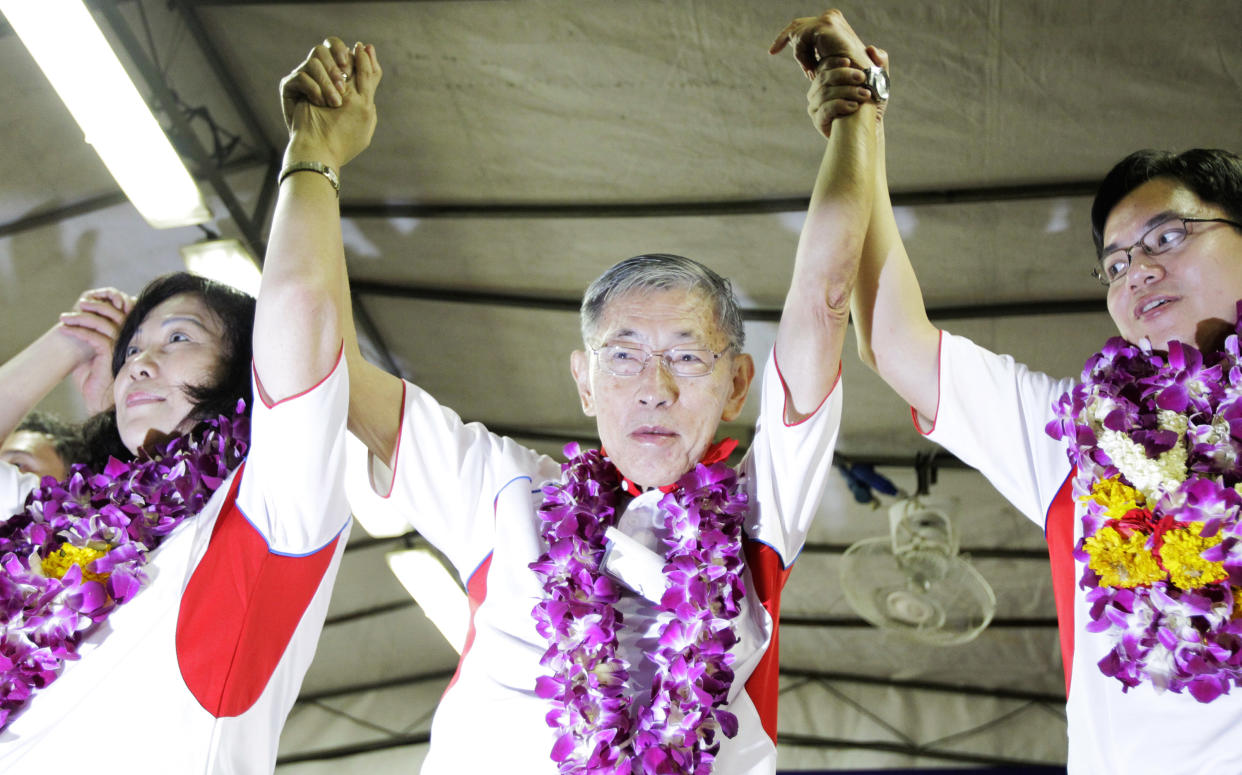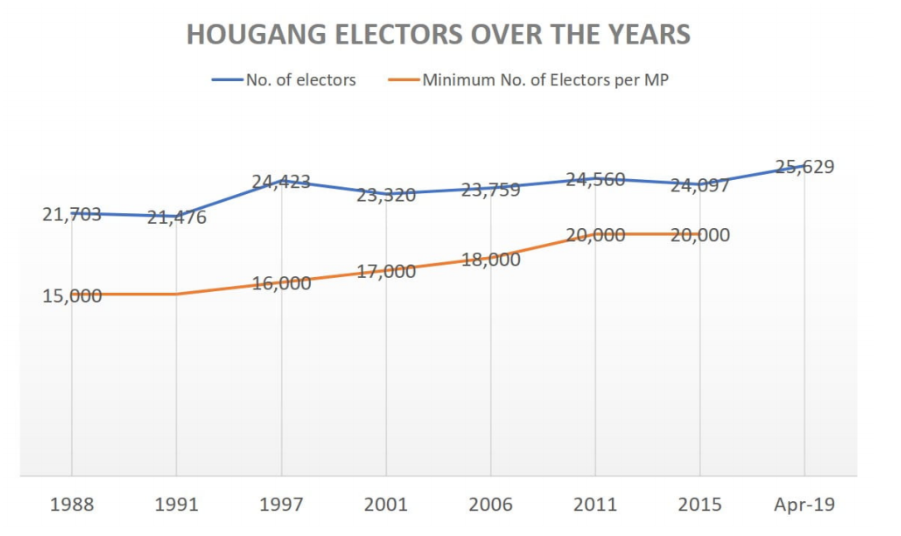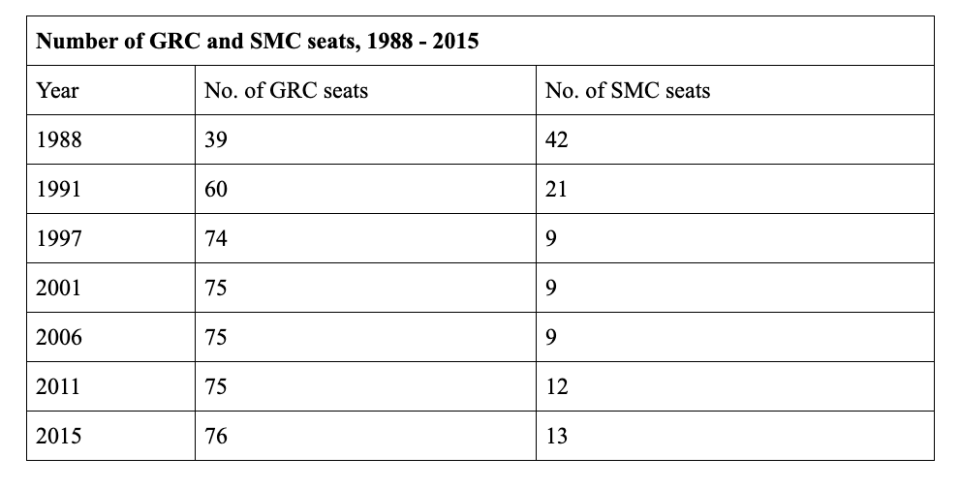Will Potong Pasir stay or go?

By Bertha Henson and Christalle Tay
SINGAPORE — At age 84, the man who made Potong Pasir's name synonymous with himself is expected to call it a day by stepping down as chief of the Singapore People's Party in October. Mr Chiam See Tong wrested the single-seat ward from the People's Action Party in 1984 when he was then heading the Singapore Democratic Party. He did so after three tries.
Will Potong Pasir, like Mr Chiam, go quietly into the night?
That's up to the Electoral Boundaries Review Committee (EBRC), which redraws electoral boundaries before general elections. The lower limit on the number of electors per MP has been set at 20,000 for the past two elections.
Potong Pasir's electoral numbers have been below the set minimum since 2001. In 2015, it was the smallest ward in Singapore, with just 17,407 voters. In April this year, the Register of Electors logged its voter numbers at 16,739. Yet the boundaries of the ward have remained intact despite population shifts – and despite the People's Action Party's take over of the ward in 2011.
Likewise, Hougang, also a single-seat ward, has remained untouched since it fell to the Workers' Party in 1991.
Lianhe Zaobao reported an expected increase in eligible electors in Potong Pasir as new residents move into new Bidadari Build-To-Order (BTO) housing estates lying within Potong Pasir SMC. The four new BTO estates total 3,700 new units, which could potentially bring the number of eligible electors above 20,000.
Residents of one estate, Alkaff Vista, have started to collect their keys in July. A second estate, Alkaff Lakeview, is set to be completed by the end of this year. The last two, Alkaff Courtview and Alkaff Oasis are expected to open its doors to residents by June and December next year respectively.

On the other hand, voter numbers in Hougang, still held by the WP, have varied.

There could be a political reason for leaving opposition-held wards un-touched: it reduces the accusation of gerrymandering by the Government.
While it was well within the EBRC's power to re-draw, and even remove, Potong Pasir, from the electoral map for the 2015 GE, the previous EBRC did not do so.
One reading: PAP’s Sitoh Yi Pin won by the slimmest of margins – 0.7 per cent or 112 votes – over the Singapore People's Party's Lina Chiam in the 2011 GE. Perhaps, the 2015 GE was to affirm that this was no freak result. Mr Sitoh widened the margin to 32.8 per cent in the 2015 GE.
There is a third SMC which is worth paying attention to – Punggol East. It fell to the Workers’ Party in the 2013 by-election which had three opposition contenders and a newbie PAP politician slugging it out. In a multi-cornered fight, the PAP usually comes out ahead because the opposition vote would be split. In this case, it didn’t.
Two years later in the GE, the PAP fielded a veteran, Mr Charles Chong in the SMC and it was wrested back with a 3.5 per cent winning margin. Will Mr Chong be going into it alone again in the upcoming election?
The Elections Department announced on 4 September 2019 that the committee was already a month into its formation, hinting that the next election is on the horizon. Judging by the past three elections, the committee may take from two to four months after its formation to release its report. The report was released two months after its formation in 2015, and four months after in 2011 and 2006.
The committee is given terms of references set by the Prime Minister which is customarily a variation of this: "To review the boundaries of the present electoral divisions, and to recommend the number and boundaries of Group Representation Constituencies and Single Member Constituencies, based on the estimated number of electors as on [given date – significance unspecified]."
As of 2001, reports started to include this term of reference: "The committee should take into consideration significant increases or decreases in the number of electors in the current electoral divisions as a result of population shifts and housing developments.”
The terms of reference that follow this statement have been subjected to change over the years. For example, the added terms of reference for 2011 was to reduce the average size of GRCs to five members and to have at least 12 SMCs. This was changed in 2015 to have the average size of GRCs below five members as well as to have at least 12 SMCs. The 2015 committee added one more SMC to make the total 13, and varied the proportions of four-MP and five-MP GRCs to reduce the average size of GRCs.
See chart below.

From 2011 to 2015, 4-MP GRCs were increased from two to six, whereas the larger 5-MP GRCs were decreased from 11 to eight. The number of jumbo 6-MP GRCs remained at two.
The recently-formed EBRC has some extra terms of reference to further increase the number of SMCs and shrink the size of GRCs, a pledge made by PM Lee Hsien Loong in a 2016 parliamentary speech. It was asked to further reduce the average size of GRCs, and create more SMCs than the current 13.
This July, People’s Voice Party chief Lim Tean, commenting on the pledge, called the increase of SMCs from 12 to 13 in the 2015 election “miserable” and said more drastic changes were needed.
Question: How many more?
There was also one instance when politicians themselves asked for a specific area to be carved out. In 1994, PAP's Matthias Yao and Singapore Democratic Party's Chee Soon Juan had engaged in a war of words via letters to The Straits Times. Dr Chee had challenged Mr Yao to a one-on-one straight fight in MacPherson which was then part of Marine Parade GRC. Mr Yao accepted the challenge and asked the Prime Minister to make MacPherson a single-seat ward.
The EBRC of 1997 was then given an additional term of reference by then PM Goh Chok Tong to provide a single-seat ward for both politicians to have their straight fight.
MacPherson remained a single-seat ward, with the exception of 2011 when it was temporarily returned to Marine Parade GRC. It was carved out again in 2015 to become MacPherson SMC, which has PAP's Tin Pei Ling as its MP.
Why this fascination with SMCs?
Single-seat wards are viewed as low-hanging fruit, especially after the introduction of GRCs in 1988. Opposition parties need field just one candidate, of any race. This makes it easier for political parties which don’t have the manpower or resources to field a slate of candidates in a GRC, to join the contest. It also explains the five multi-cornered fights which took place in the 1988 and 1991 GE.

Between 1997 and 2006, the number of SMCs were drastically reduced to nine, just shy of the legal minimum of eight, leaving the Opposition with even fewer options.

So will Potong Pasir stay or go? We'll know soon enough.
Bertha lectures in the National University of Singapore. Christalle is a final-year Communications and New Media Department undergraduate.
Related stories:
COMMENT: The history of the Group Representation Constituency


